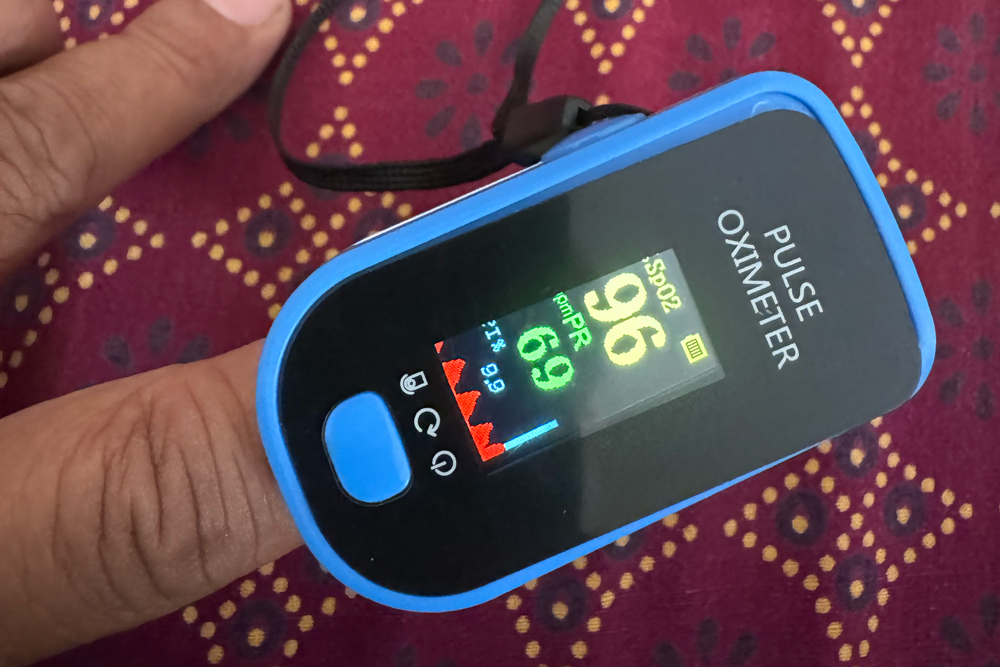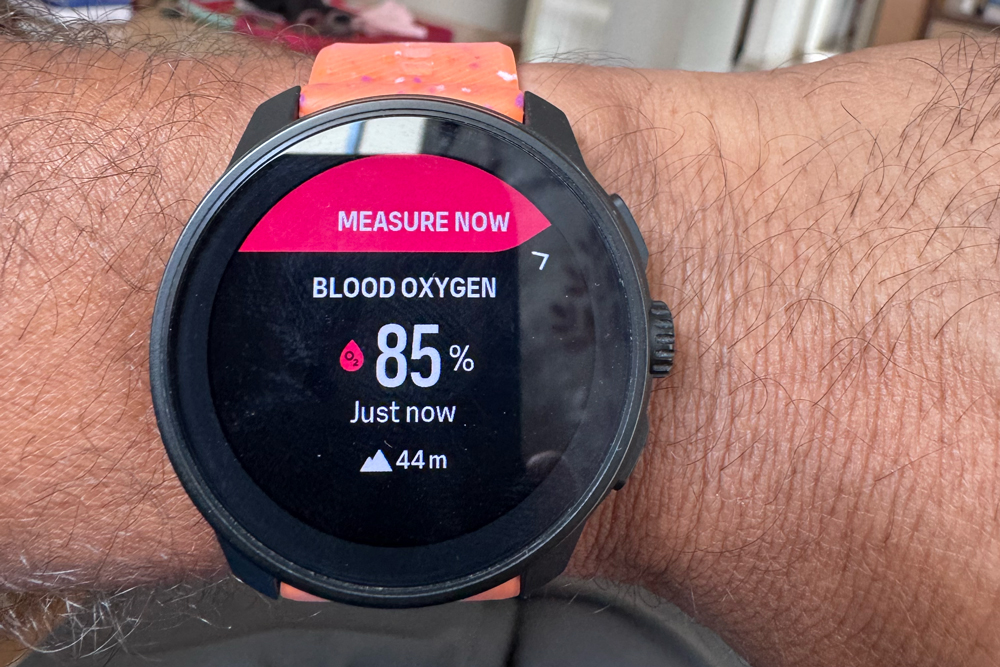Suunto Race S too high HR
-
I have a new Suunto Race S that shows way too high HR readings during exercise. I compare it to my garmin w/wo a chest strap which are pretty similar. Also just exertion based it’s 30-50 beats too high, i.e. unsuable. Is this a common problem and any way to fix it? Right now I regret buying the watch.
-
@David-Kleman same problem for me. HR is only accurate for me during total rest (Sleeping, sitting still…). As soon as I move my arm or even only my fingers (typing on a keyboard), the HR increases slowly and locks to higher heart-rates. Sometimes even double the actual one. It almost instantly recovers if I take of my watch and put it back on or it slowly recovers over time if I do not move at all for approx. 1 minute.
Not only the sensor is bad but also the algorithm seems to favour fast increases above fast decreases. Therefore, misreadings due to movement (high values) seem to establish quickly but correct (low) readings afterwards are ignored and HR recovers to correct values too slowly again which makes the bad accuracy even worse. I tried everything that is recommended for OHRs and never had these problems with my previous forerunner and vantages which were spot on for normal daily use and light activities like hiking or steady and slow running under easy conditions.
Therefore, I never even dared to try the OHR during exercise since I anyway always use a HR strap during sport. As OHR readings during sleep are accurate, I in the end decided to stick with the Race S as the new Garmin alternatives are way too expensive. As daily tracking is so bad, recovery and resource metrics might not be as accurate as supposed but I see these metrics anyway more like a fun gimmick.
But before ordering I never expected the OHR reading to be a problem during normal daily tracking as this was never an issue with any other watch from other brands over the last years. Probably would have not ordered it had I known that before. -
@David-Kleman I bought a new strap, which was more stiff, helps for me.
With original strap, running was reasonable, during cycling the watch would just not measure after a while.
With new strap, better results at least.
Some people in this forum shave some hair where the watch is.
-
@David-Kleman I generally don’t trust HR from the watch for any serious considerations. I agree with @brave_dave I have the same experiences with HR.
I mainly use it for GPS, recording my daily routes, speed, Altitude and distance. Even SPO2 is not that accurate; it shows 92-94% and the actual monitoring system goes to 96-98%.
-
@withManish Out of curiosity, I measured O2 level on watch and device same time, same hand and here are the results.
The watch takes quite a long time to measure the O2 level compared to the device. Out of 5 attempts, once it came to 98% otherwise always around 85% and the SPO2 device is 96-98% at 44 meters altitude.


Once I got alerted about keeping my wrist and fingers stable, that is good, but it should prompt before it starts measuring, so the user is careful at first hand.
I raised so many concerns about the software glitches and user interface customisation, but not sure about the engineers whether they are here to read and reply or just we are just taking help from each other to find solutions.
-
@withManish yes, you are right. They should focus on the important stuff and make it reliable, implement really important functions and fix bugs. They could easily do that using their big community that is more than willing to help to identify and test stuff and that for free. All this useless and inaccurate stuff like sleep stages, body resources, recovery time etc. that are known to be not at all reliably measurable with smart watches are just a waste of time, money and other resources.
Garmin started with this whole pseudo-scientific approach to have new selling arguments and to sell their watches totally overpriced by pretending they can measure everything. That’s why I left them. Everyone now tries to copy that bull**** and therefore waste money and time on implementing similar stuff, leaving important things behind.
I really like my race s as all comparable alternatives for me are too big, too heavy, don’t look as nice, need to be charged too often or are way too expensive for what they actually reliably can do.
So race s is best for me as there is no better alternative but still there is a lot of room for improvement with things others do better and that are definitely easily doable by Suunto. And yes, OHR and OHR algorithm is one of them but there are several other software related drawbacks…I hope they realize that there is a big target group of serious athletes spread over all brands that are neither really happy with Garmin, Coros, Suunto, Polar or Apple because they just want good functioning and solid equipment without breaking the bank…but no one offers this package.
-
@withManish Why don’t you measure your index finger with a watch?
-
@SODIUM, my friend watch is to wear on the wrist, not to put on the index finger, as simple as it is meant to be.
I do understand if 96% shows 95% (1-2% correction is okay), not 10-15% difference is not acceptable to anyone, this is at an altitude of 44 meters, imagine I am at 4400 meters?
-
@brave_dave I agree with you. These watch manufacturers are busy competing with Apple Watches, which are more of a lifestyle product for no real reason. As an athlete or outdoor person, I care more about precise readings on maps and routes. If I want accurate HR, SpO2, or calorie burn calculations, I’d rather they design proper accessories like a chest belt or other dedicated devices—I’d happily buy them if needed. They already have those, such as wrong reading, leading you to bad mental health for no reason.
I still love my old Ambit Peak, with its simple yet precise features. Whatever it offered—watch or software—it was more reliable and less buggy.
Now, they just launch watches without proper software testing, and their service agents aren’t trained well either. Even basic things like battery usage customisation don’t work. For example, if I set custom battery settings, they don’t save—I have to keep checking and resetting them every time.
Yesterday, I discovered that if I change the battery performance mode to endurance and switch off HR, the watch forcefully reverts to performance mode. That means I have to go through the struggle again whenever I start a new activity. And whenever you ask their support team, the standard reply is: “Reset the watch” or “This is designed that way to save battery/performance.”
In the last 30 days (and this is a brand-new watch), I must have reset my Suunto S more than 5–6 times—with no luck.
Simple and basic things are not working on the watch. The worst was when I was discussing this with a support agent, rather than apologising or offering a solution, he actually said: “Do whatever you want, sell it if you don’t like it.” And this was within 30 days of purchase, instead of telling me I could return it if I wasn’t happy.
There is no way you can log a support ticket (if it is there, I am not aware of it).
-
@brave_dave, and another problem with the developer team is that as soon as they launch a new device, they forget about old bugs on other devices and stop working on them.
-
@withManish When you go to the hospital, what’s the simplest way they measure SpO₂?
They always clip the sensor on your finger, right?
That’s because the fingertip gives the most reliable reading.
I’m honestly surprised you’d trust a software-based estimation on the wrist more than the real measurement method used in hospitals.

-
@SODIUM I absolutely don’t believe in such wrist watches for my real health monitoring, but when they claim and advertise based on such facilities, it should be close by, not a 15% difference and completely inaccurate.
The tool I used to compare is the pocket tool from my expedition kit, which is widely used.
Have a good weekend
